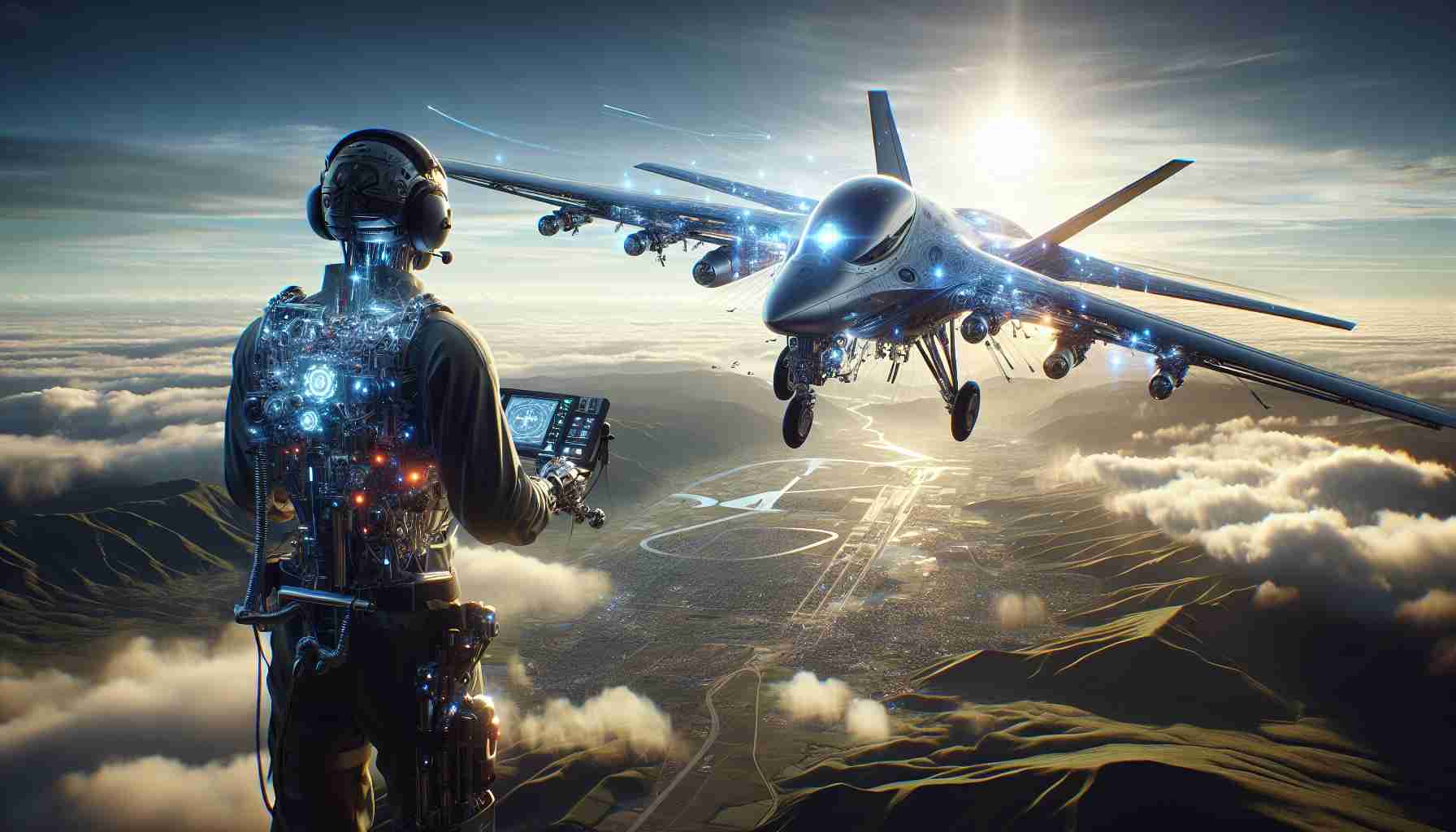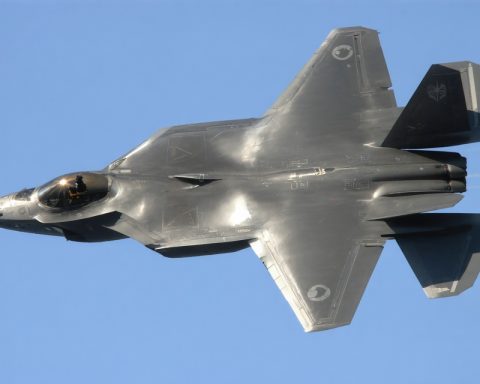As the aviation industry strides into the future, a thrilling revolution is underway—artificial intelligence (AI) is set to redefine the role of the aircraft pilot. The integration of AI as a co-pilot promises to enhance safety and efficiency in ways never before imagined. This leap forward not only reduces human workload but also addresses potential human errors during flights.
In recent years, AI technologies have been making significant inroads. Flight management systems powered by AI are not just about autopilot functions anymore. These systems are evolving to assist human pilots in decision-making processes, predicting weather patterns, optimizing fuel consumption, and managing real-time data for thousands of in-flight parameters.
One groundbreaking development is AI’s ability to learn from past flights and simulate diverse scenarios, preparing the human pilot for a wide range of potential challenges. This intelligent layer of support acts as a reliable secondary pilot, ensuring quicker computation and response times, particularly in crisis situations.
While some may fear the replacement of human pilots, the reality appears more symbiotic. AI’s role could gradually shift human pilots towards more strategic and supervisory roles. This technological advancement heralds a future where safety standards soar, routes become more optimized, and air travel gets even more reliable and efficient.
The sky is no longer the limit—the fusion of AI and aviation might just propel us to new horizons, ensuring our pilots fly safer and smarter than ever before.
The Future of Flight: AI Co-Pilots Transforming Aviation
The integration of artificial intelligence (AI) into aviation as a co-pilot heralds an evolution that can significantly affect the environment, humanity, and the economy. By enhancing flight safety and efficiency, AI technology holds promise for creating a more sustainable and connected future.
Environmental Impact
AI’s ability to optimize fuel consumption directly addresses environmental concerns by potentially reducing the carbon footprint of air travel. As aviation remains a significant contributor to global greenhouse gas emissions, implementing AI systems that refine fuel use can lower emissions, contribute to the fight against climate change, and promote a cleaner, more sustainable future. AI can also improve flight paths, avoiding hazardous weather and reducing delays, which further minimizes unnecessary fuel consumption.
Human Impact
The transition from human-centric flying to an AI-supported model places pilots in a more strategic and supervisory role. By reducing pilot workload and lessening the impact of human error, AI fosters a safer travel environment. Human pilots, acting as strategic overseers, can focus on complex decision-making while relying on AI for data-driven insights and real-time analytics. This collaboration allows for more profound human-machine interaction, potentially leading to new training paradigms and skill development for pilots.
Economic Influence
The economic benefits of AI in aviation include reduced operational costs and enhanced efficiency. Optimized fuel consumption and improved route planning can result in significant financial savings for airlines. Moreover, a decline in human error-related accidents can decrease insurance and regulatory costs. These savings have the potential to be reinvested into industry innovation and consumer price reductions, stimulating economic growth within the aviation sector and beyond.
Future Connections
Looking to the future of humanity, AI’s integration into aviation could influence the broader transportation and technology industries. As AI systems become more sophisticated, industries may adopt similar models for integrating technology as supportive rather than replacement functions. This could reshape the workforce, necessitating retraining programs and educational reforms to prepare future workers for symbiotic partnerships with AI across various fields.
AI co-pilots bring us closer to an age where air travel is safer, more efficient, and environmentally conscious. As technology and humanity evolve together, this aviation revolution could serve as a blueprint for integrating AI into other critical industries, paving the way toward sustainable innovation and economic growth in the modern world.
How AI is Transforming Aviation: Opportunities and Challenges
As artificial intelligence (AI) continues to make significant strides in various industries, the aviation sector is eagerly embracing this technological marvel to revolutionize air travel. The integration of AI as a co-pilot promises to uplift safety and efficiency standards, offering groundbreaking advancements while also posing some unique challenges.
Innovations and Features of AI in Aviation
AI is not only enhancing traditional autopilot systems but is also transforming them into advanced flight management systems with capabilities beyond navigation. These AI-powered systems assist pilots by:
– Predicting Weather Patterns: Utilizing sophisticated algorithms to forecast and navigate around turbulent weather, ensuring smoother flights.
– Optimizing Fuel Consumption: Analyzing vast amounts of data to recommend fuel-efficient routes, reducing costs and environmental impact.
– Managing Real-Time Data: Processing thousands of in-flight parameters to offer insightful recommendations and enhance decision-making.
Moreover, AI’s ability to learn from past flights and simulate diverse scenarios equips pilots with proactive strategies for managing emergencies, amplifying the safety net during critical situations.
Pros and Cons of AI Co-pilot Systems
Pros:
– Enhanced Safety: AI provides rapid computational support, reducing response times during crises.
– Reduced Pilot Workload: By handling routine tasks, AI allows pilots to focus on strategic decision-making.
– Fuel Efficiency: AI’s ability to optimize routes can significantly cut down fuel consumption.
Cons:
– Dependency Risks: Increased reliance on AI might lead to skill degradation in pilots.
– Complex System Management: Implementing and maintaining such advanced systems requires continuous development and monitoring.
– Privacy Concerns: The vast data collected and analyzed by AI systems could pose privacy challenges.
Market Analysis and Predictions
The market for AI in aviation is expected to grow substantially as airlines and aviation companies invest in smarter technologies. This growth is driven by the need for efficient operations, cost reduction, and enhanced passenger experience. As technology advances, the role of AI in aviation could evolve towards fully autonomous flights, though human oversight will remain critical for the foreseeable future.
Security and Sustainability Aspects
Integrating AI in aviation involves overcoming security challenges to ensure systems are protected against cyber threats. Moreover, the push for sustainability accelerates the adoption of AI, as it aids in reducing carbon footprints through efficient flight routing and fuel optimization.
Conclusion
The fusion of AI and aviation offers a future where air travel is safer, more reliable, and environmentally sustainable. As AI technologies continue to evolve, they hold the promise of transforming aviation on multiple fronts, though balancing innovation with human oversight and security considerations will remain crucial.
Further Reading
Explore more about the ongoing innovations in AI and its impact on various industries by visiting IBM and Airbus.











